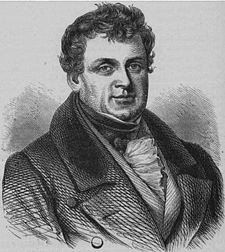The Tithe War in Ireland
Three articles by Patrick O'Donoghue (Castleknock College, Co. Dublin)
(From Studia Hibernica)- Causes of the Opposition to Tithes, 1830-38 - No. 5 (1965), pp. 7-28
- Opposition to Tithe Payment in 1830-31 - No. 6 (1966), pp. 69-98
- Opposition to Tithe Payment in 1832-33 - No. 12 (1972), pp. 77-108
"The Tithe War" By Sean O'Brien, Retired National Teacher, Goresbridge
(Hosted by Ireland Genealogical Projects from 'Carloviana' (1994/1994 pp. 4-10)Gemini AI has created a report about The Tithe War in Ireland.
You can read the report here.

The Royal Irish Constabulary before they destroy a home a few decades after The Tithe War
James Hoy left County Louth for America in 1830, just as the Tithe War was beginning. His Naturalization Papers indicate that he was bound for Phillipsburg, New Jersey, which is just across the Delaware River from Easton, Pennsylvania, but he stopped in Newark NJ for 15 years first. His believed home was a tiny townland called Newragh which had only 3 families living there in 1800. The next date when we know of habitation was 1850 when 3 other families lived there and one of which still lives there. We must think that James was forced to emigrate because his family lost their home due to the War.
The Tithe War in Ireland lasted from 1831 to 1836 and refers to a series of periodic skirmishes and violent incidents connected to resistance to the obligation of Catholics in Ireland to pay tithes for the upkeep of the Church of Ireland which was the Protestant denomination supported by the English Government.
But the Composition Act of 1823 made it impossible to pay them in kind anymore instead of money. From the time of the Composition Act tithes were supposed to be paid in cash, and Tithe surveys were carried out in each Parish to assess what the income for that parish would be. Two people were appointed by each parish to carry out this assessment.
There had been a campaign of largely peaceful resistance to collection since 1829 and it soon had a financial effect on the Anglican Clergy, who began in 1831 to record lists of defaulters. These lists of 'Tithe Defaulters' identified almost 30,000 individuals. The lists were passed on to the Irish Constabulary, which had been established in 1822 to take over the functions of the militia.

After the RIC destroyed a home
They were given the name 'Royal Irish Constabulary' by the English queen in 1867 for their work against their own people. They were smashed by the IRA in 1919 and the 'Black & Tans', who were ex-British Army soldiers from WW I were brought into Ireland to replace them.
This massacre caused people to organize their resistance with agreed signals such as warning the community of the approach of police by the ringing of chapel bells. Such a warning resulted on 14 December 1831 in an ambush of a detachment of 40 police at Carrickshock in County Kilkenny; they were routed by the forewarned inhabitants and had 19 of their number killed, including their Chief Constable.
The British Government poured troops into the country, fearing a repeat of the 1798 uprising. The war came to a head in 1835 with the Rathcormac massacre, County Cork, when military and police killed 17 and wounded some 30 more in an attempt to collect a tithe of 40 shillings from a widow.

Daniel O'Connell was known as 'The Liberator' for ending most of the 'Penal Laws' against Catholics
As a consequence of the Tithe War, many Irish people were forced to leave their homes. This was the period when many Irish people began to arrive in America and establish churches and schools. It was the work done by the Tithe War immigrants that made it possible for the Famine immigrants to find a home in America ten years later.
(From wikipedia.com. and johngrenham.com)